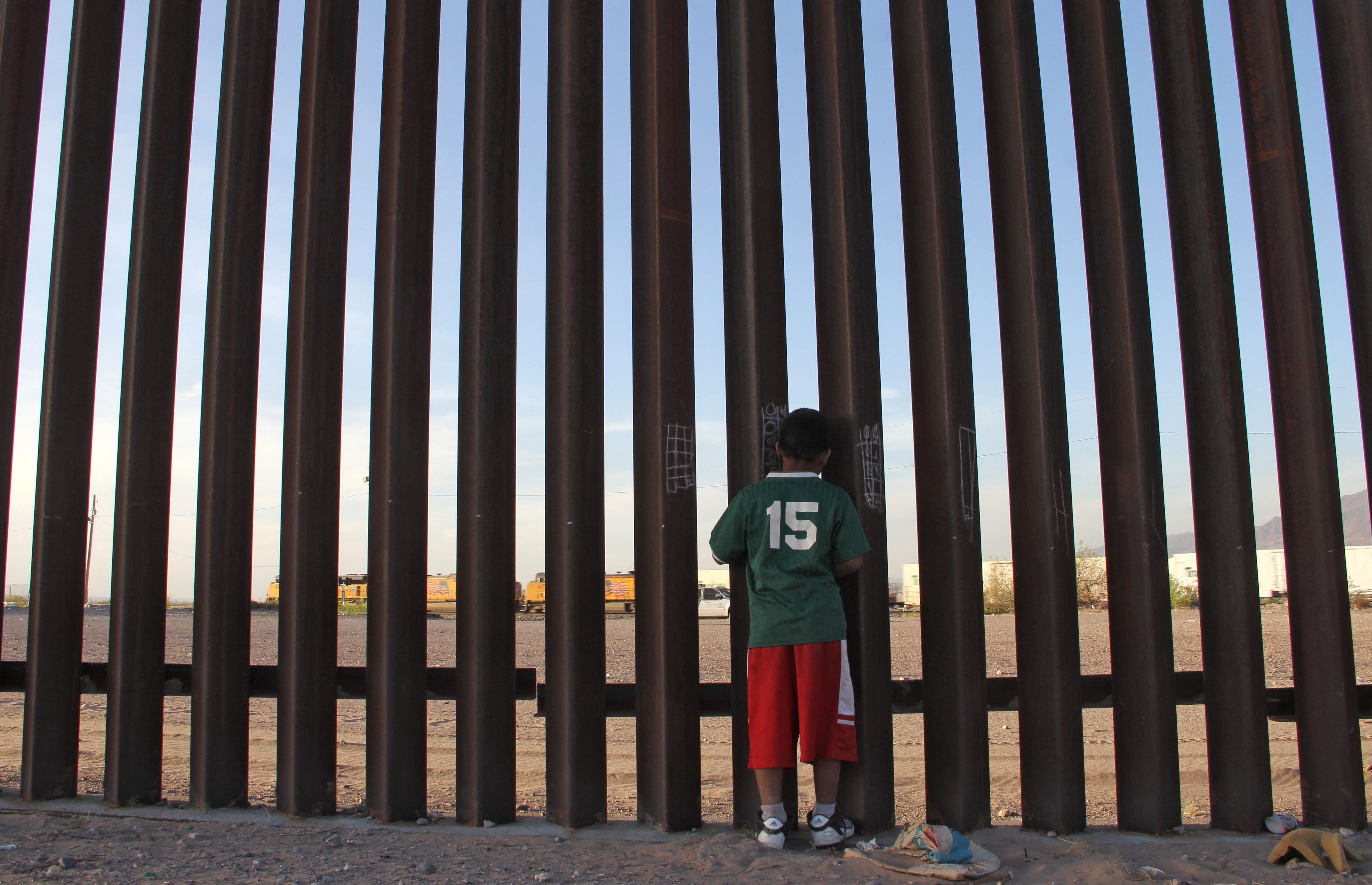The Independent's journalism is supported by our readers. When you purchase through links on our site, we may earn commission.
What Trump and Biden both get wrong about the migration ‘crisis’ at the border
As a journalist with experience of reporting on real immigration stories, I recognize the problems both Republicans and Democrats refuse to see


I rarely find myself saying this, but Donald Trump is completely right: There is a “calamity” going on at the border, as he just wrote in an op-ed in The Washington Times.
He’s just wrong about who is responsible for it, and what the actual scandal at the border is. But he’s not alone. The ignorance is bipartisan and historical.
On Wednesday, the former president headed to South Texas to visit the US-Mexico border, where he warned at a town hall event with Fox News later that night that migrants, including “some of the worst people on earth”, were “storming into our country” and causing “incalculable” damage now that Joe Biden is in office.
It’s true that 2021 could be a record year for migration at the southern border, both by young border-crossers and overall, but that’s not a crisis in itself. Instead, the crisis as I see it, as a reporter with experience covering immigration, is a near-total inability by politicians of both parties — and far too many credulous journalists — to understand the current state of immigration at the US border with Mexico for what it really is.
The US, more than anyone else by a long shot, has both created deep inequalities that drive migration and simultaneously committed to a politics of hard-line immigration enforcement that does next to nothing to remedy them. It’s a combination that all but guarantees an endless “crisis” at border. Periodic trends up or down, from one year to the next, have no bearing on this deeper truth. The only thing greater than the human desperation that’s resulted from US policy is America’s unwillingness to face that fact.
To start, it helps to understand who is coming to the US. It should go without saying, but the migrants at the Southern border are not the sort of “super predator meets El Chapo” type Donald Trump frequently imagines.
Instead, data shows they are largely families and children fleeing violence, poverty, and climate change in Central America. The US played a huge role in creating all three forces. MS-13 and Calle 18, the violent gangs that terrorize Salvadorians, were formed in US prisons then deported. As Vincent Bevins’s recent, masterful history of the Cold War, The Jakarta Method, ably argues, the US has backed death squads or outright coups in nearly every country in Central America, usually to overthrow left-leaning governments focused on improving the lot of poor, rural people.
On top of this, America is one the world’s largest carbon emitters. Climate change first and foremost affects the most vulnerable populations, including those who routinely arrive at the southern border.
When these people arrive to the US, they’re faced with a country that simply does not want to allow in the number of people who feel they have no other choice but to try anyway. You wouldn’t know it from the way most people talk about it, but the proportion of immigrants arriving compared to the total population is actually at a historical low, only seen during the world wars and the Great Depression. So are apprehensions at the US-Mexico border, which peaked in 2000. What is “storming into our country,” to borrow Trump’s phrase, is an ever more carceral approach to treating the numerous people who believe America is their best — or only — chance at achieving a better life.
In the 1980s, the US immigration system only held about 2,000 people a day, even as apprehensions at the southern border were higher than many recent years. By the middle of the Trump administration, that number shot up to an average of 50,000.
The Trump administration found numerous ways to further plug this bottleneck, from under-the-radar tweaks to immigration processing to effectively shutting down the US asylum system, first by making tens of thousands asylum-seekers remain in Mexico in squalid border camps while their claims processed, then by immediately deporting more than 640,000 people during a coronavirus border lockdown. Analyses and Border Patrol have concluded that many of these folks have tried to cross the border again in recent days.
Administrations may change, but the need to migrate will stay the same. The Biden administration has moved slowly to roll back these measures, officially ending the Trump “remain in Mexico” policy in June, but still hanging onto Title 42, the coronavirus asylum shutdown engineered by the staunchly anti-immigration Trump adviser Stephen Miller (though it made a carveout for young people crossing the border alone.)
Recent announcements of a $310 million aid package for Guatemala — and rumblings of a larger, $4 billion regional aid plan — are encouraging. But barring the type of legislative fix that has bedeviled legislators for the last 20 years, the great asymmetry between needs and solutions at the border will continue.
The Biden administration has spent most of its early, crucial political capital negotiating issues far from the border. But until the president — and everyone else — comes to understand the border not as some unexplainable media sensation, but rather the deliberate result of US policies that can be changed, the “border crisis” will stretch onto infinity.

Join our commenting forum
Join thought-provoking conversations, follow other Independent readers and see their replies